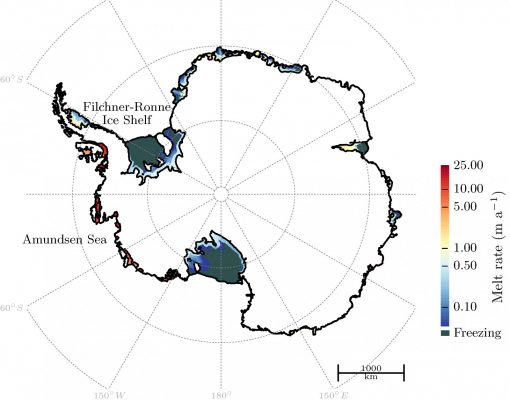Ice shelves (the floating parts of the Antarctic ice sheet) play a fundamental role in the stability of the Antarctic ice sheet (see this post) and, therefore, its contribution to global sea-level rise. They lose mass primarily through melting at their bases, which are in contact with the ocean. This thins them and makes them more vulnerable, reducing their stabilising potential and causing more i ...[Read More]
Image of the Week – (Un)boxing the melting under the ice shelves

Figure 1: Melting underneath Antarctic ice shelves as modelled with the Potsdam Ice-shelf Cavity mOdel (PICO) for present-day ice geometries and ocean conditions. Extending a simple ocean box model approach (Olbers and Hellmer, 2010), it efficiently calculates the wide range of melting in Antarctica [Credit: adapted from Fig. 5 of Reese et al. (2018)]
The Antarctic ice sheet stores a large amount of water that could potentially add to sea level rise in a warming world (see this post and this post). It is currently losing ice, and the ice loss has been accelerating in the past decades. All this is linked to the melting of ice – not at the surface but at the base, underneath the so-called ice shelves which form the continuation of the Antarctic i ...[Read More]
